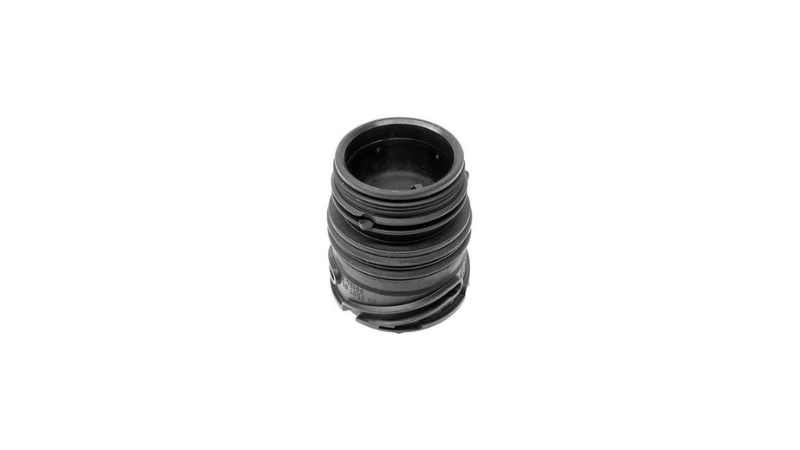Have you ever noticed a transmission fluid leak under your BMW? This could be a sign of a failing mechatronics sleeve. The mechatronics sleeve is a crucial component in BMW’s sophisticated transmission system, ensuring a proper seal between the transmission body and its electrical connection.
Found in various BMW models, including those with 5HP, 6HP, and 8HP transmissions, this small yet vital part significantly contains the Automatic Transmission Fluid (ATF) within the transmission. When the mechatronics sealing sleeve fails, the primary symptom is an ATF leak that could potentially cause a transmission failure.
If this leak is left unaddressed, it can lead to a significant drop in ATF levels, which can cause a host of transmission issues such as erratic shifting, transmission slipping, and even warning lights on your dashboard. Ignoring these leaks can result in more severe transmission damage and costly repairs down the line.
In this blog post, we will explore the symptoms of a mechatronics sleeve leak, guide you through diagnosing it, and provide preventive maintenance tips to keep your BMW running smoothly. Understanding and promptly addressing mechatronics sleeve issues is key to preserving your BMW’s performance and longevity.
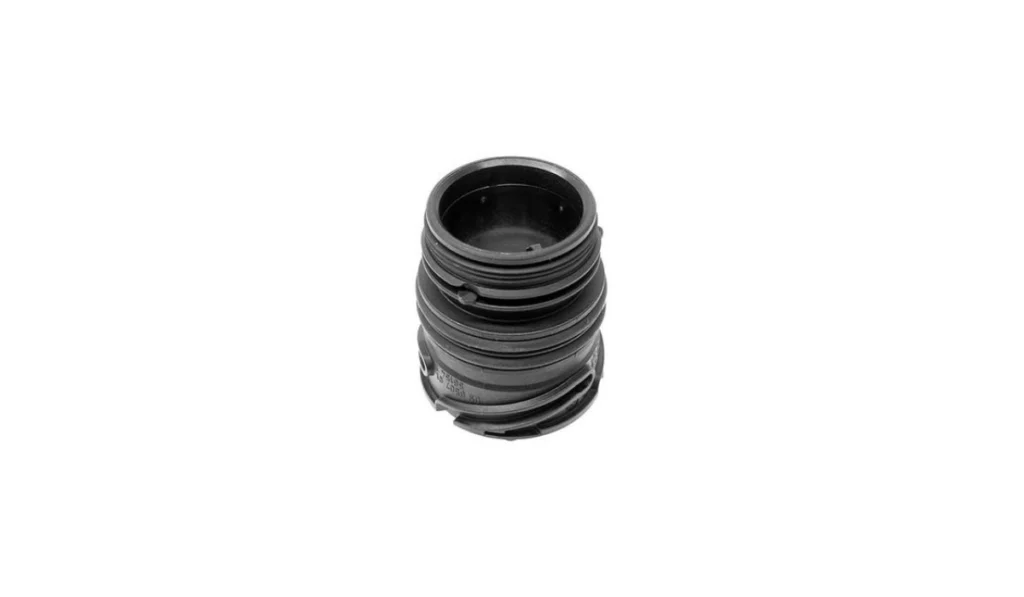
What is a Mechatronics Sleeve?
Understanding the mechatronics sleeve is essential for grasping its importance in your BMW’s transmission system. This small but critical component ensures that the Automatic Transmission Fluid (ATF) remains properly sealed, allowing for smooth and efficient gear shifts. Let’s talk about its function and the BMW models that are prone to this issue.
The Role of the Mechatronics Sleeve in the BMW Transmission System
The mechatronics sleeve is a vital sealing component within your BMW transmission. Its primary function is to prevent ATF from leaking into the area where the wiring harness connects to the transmission.
Positioned at the transmission body, this sleeve ensures the electrical connections between the wiring harness and the mechatronics unit remain dry and secure. By acting as a barrier, the mechatronics sleeve keeps ATF away from the electrical connection points, which is essential for the proper operation of the mechatronics unit — the brain of the transmission operations.
While the mechatronics unit controls the hydraulic functions that manage gear shifts, it relies on electrical signals to operate effectively. The mechatronics sleeve ensures that these signals are transmitted accurately by preventing ATF from interfering with the electrical connections, thus allowing for precise and efficient gear changes.
BMW Models Most Susceptible to Mechatronics Sleeve Leak Issues
Certain BMW models are more prone to mechatronics sleeve leaks, particularly those equipped with the ZF 5HP and 6HP automatic transmissions. These leaks can lead to significant transmission problems if not addressed promptly. Here are the top five BMW model lines that are most susceptible to this issue:
BMW 3 Series (E90, E91, E92, E93)
The E90, E91, E92, and E93 models, known for their performance and reliability, often experience mechatronics sleeve leaks due to the widespread use of the ZF transmissions in these vehicles. Owners frequently report fluid leaks and related transmission issues around the 50,000 to 60,000-mile mark.
BMW 5 Series (E60, E61)
The E60 and E61 5 Series models are frequently affected by mechatronics sleeve leaks. Owners often report issues related to transmission fluid leaks and subsequent transmission problems if not addressed promptly. These issues are commonly discussed online, indicating a higher incidence rate.
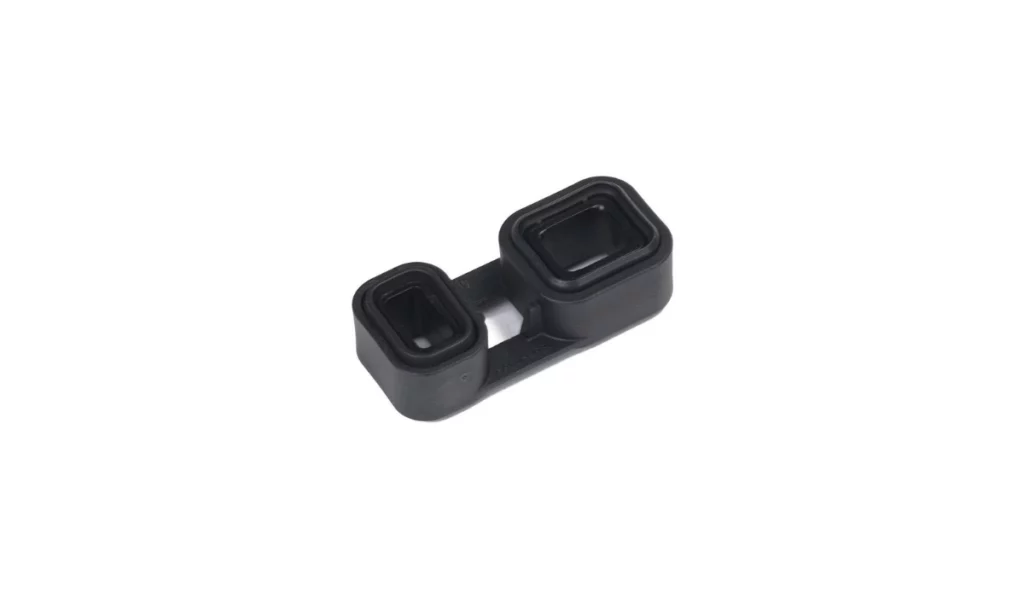
BMW X5 (E53)
The E53 X5, BMW’s popular SUV, commonly encounters mechatronics sleeve leaks. This issue can lead to significant transmission problems, especially if the vehicle is used for towing or heavy-duty driving. Regular maintenance and inspection are crucial to prevent severe damage.
BMW 7 Series (E65, E66)
The luxurious E65 and E66 7 Series models are not immune to mechatronics sleeve leaks. Given their complex transmission systems, any leaks can quickly lead to more severe transmission problems. Owners of these models often discuss the need for timely repairs and maintenance to avoid major transmission failures.
BMW 6 Series (E63, E64)
The E63 and E64 6 Series models are also susceptible to mechatronics sleeve leaks. Known for their powerful performance, these models require regular transmission maintenance to prevent such issues. Fluid leaks can lead to erratic shifting and other transmission-related problems if not addressed.
These models are known to have higher occurrences of mechatronics sleeve issues due to their use of the ZF 6-speed automatic transmissions. Regular inspection and timely replacement of the mechatronics sleeve can help mitigate these problems and ensure the longevity of the transmission.
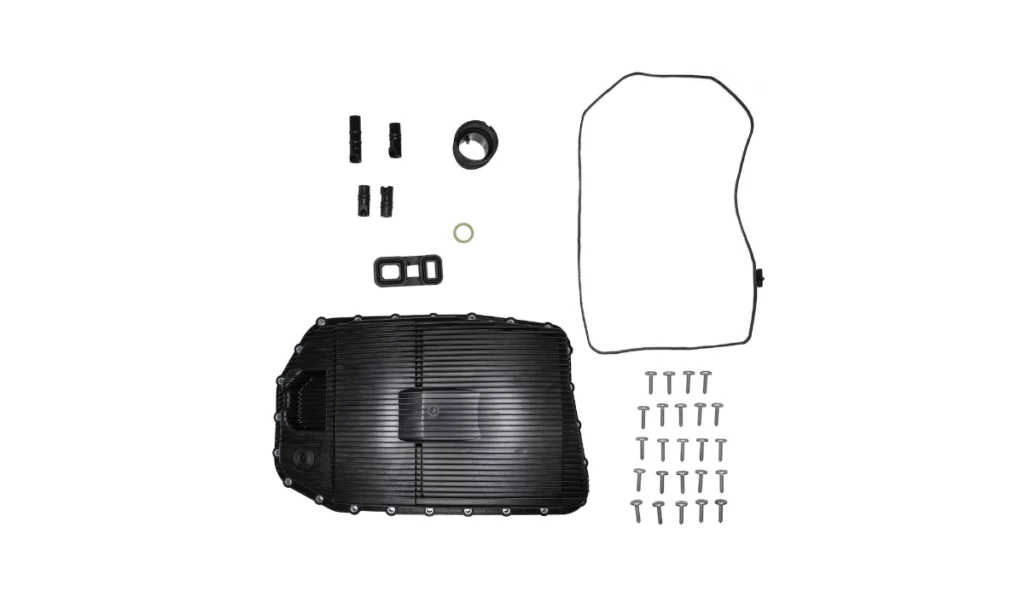
Common Symptoms of a Faulty Mechatronics Sleeve
Recognizing the symptoms of a leaking mechatronics sleeve is crucial for maintaining your BMW’s transmission health. Early detection can prevent more severe transmission issues and costly repairs. This section will cover the primary symptoms to look out for and what happens if a transmission fluid leak is left unaddressed.
Leaking Mechatronics Sleeve — What To Look Out For
A transmission fluid leak is the most common symptom of a faulty mechatronics sleeve. This occurs when the sleeve fails to seal properly, allowing ATF to escape. If you notice a puddle of transmission fluid under your car, it strongly indicates this issue.
A burning smell around the car can also signal a transmission fluid leak, as the escaping fluid may come into contact with hot engine components, including the exhaust pipe. This can cause the fluid to burn and produce a noticeable odor, alerting you to a potential problem with the mechatronics sleeve.
It is crucial not to delay the repair of a leaky mechatronics sleeve, as it may result in a low transmission fluid level. This can lead to several serious issues that affect your vehicle’s performance and longevity.
Low Transmission Fluid — Here’s What Will Happen
When the transmission fluid level drops significantly due to an unchecked leak on the mechatronics sleeve, several serious issues can arise, impacting your vehicle’s performance and longevity. Below are some common symptoms of driving with a low ATF level:
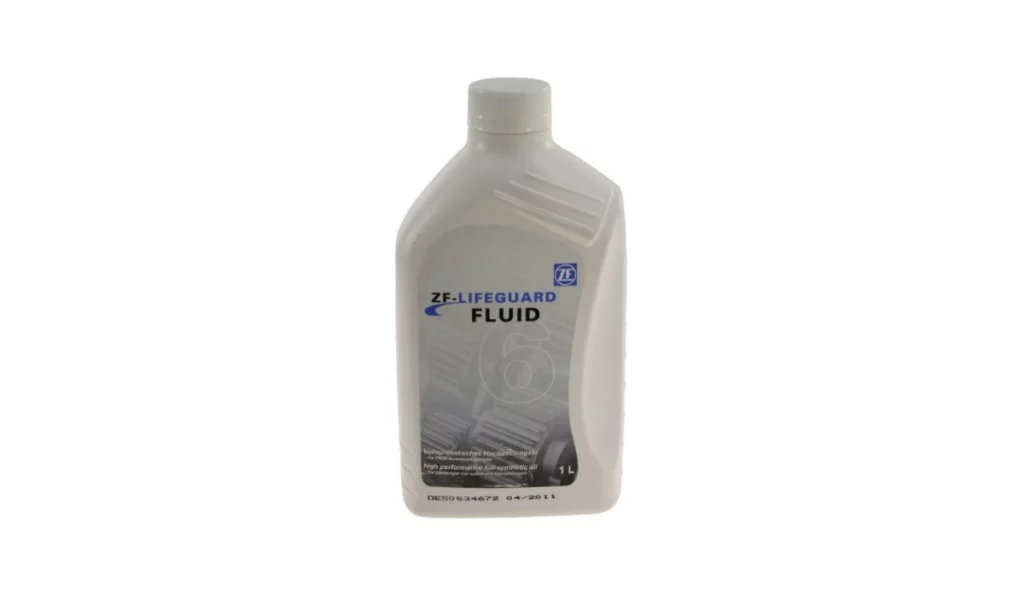
Erratic Shifting — Inconsistent and rough gear changes are the first noticeable symptoms. You might experience abrupt or delayed shifting, particularly during acceleration or deceleration. This can make driving unpredictable and uncomfortable, as the transmission struggles to engage the correct gear smoothly.
Transmission Slipping — With insufficient transmission fluid, maintaining gear engagement becomes difficult. You may notice the car “slipping” out of gear, meaning it unexpectedly shifts and is having trouble staying in gear. This slippage affects driving performance and can pose safety risks, especially during high-speed driving or when merging onto highways.
Transmission Overheating — Low transmission fluid levels can cause the transmission to overheat. Transmission fluid not only lubricates but also cools the transmission components. Without adequate fluid, the increased friction and heat can cause severe damage to the transmission parts, leading to costly repairs or even complete transmission failure.
Increased Wear and Tear — Transmission fluid is essential for reducing friction between the moving parts inside the transmission. Low fluid levels mean these parts can grind against each other, increasing wear and tear. Over time, this can lead to significant internal damage, shortening the transmission’s lifespan.
Check Engine Light or Transmission Warning Message — Modern vehicles are equipped with sensors that monitor transmission performance. Suppose these sensors detect issues such as low fluid pressure or abnormal operating conditions caused by insufficient fluid. In that case, they will trigger warning lights on the dashboard, such as the check engine light or a transmission warning message. These indicators alert you to a problem that needs immediate attention.
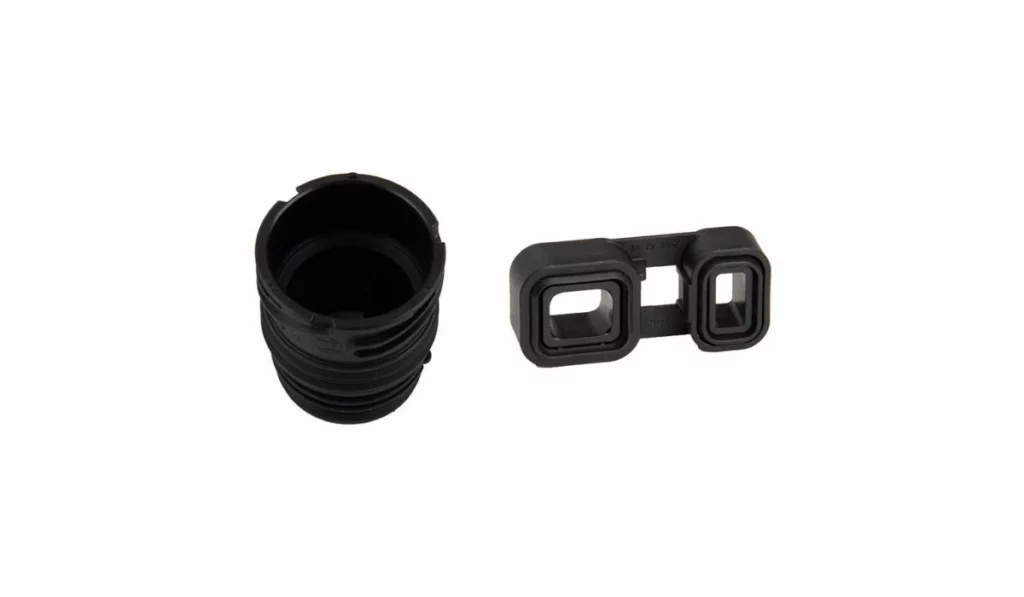
Can I Drive with a Leaking Mechatronics Sleeve?
Driving with a Leaking mechatronics sleeve is not advisable. While a minor leak might seem manageable initially, it can quickly lead to a substantial drop in transmission fluid levels, causing erratic shifting, transmission slipping, and triggering warning lights.
Driving under these conditions can severely damage your transmission, leading to expensive repairs or even a complete transmission failure. It’s best to address the issue promptly to avoid further complications.
Exclusive Discounts on Genuine BMW Parts
Explore Bimmers.com for a vast selection of genuine BMW and OEM parts at unbeatable prices. We aim to support BMW enthusiasts with high-quality auto parts at reduced costs. Our range includes everything your BMW requires, meeting all OEM standards. From essential brake components to routine maintenance items, we’ve got you covered.
Choosing Bimmers.com means enjoying substantial savings without sacrificing quality. With our large inventory, user-friendly site, and dedicated customer service, you’ll always find what you need for maintenance and upgrades.
Diagnosing Mechatronics Sleeve Issues
Proper diagnosis of mechatronics sleeve issues is essential for ensuring your BMW’s transmission remains in top condition. Early detection can save you from expensive repairs and prolonged vehicle downtime. This section will guide you through diagnosing a faulty mechatronics sleeve, from visual inspections to using advanced diagnostic tools.
Visual Inspection for Leaks
Start by conducting a thorough visual inspection to identify any signs of ATF leaks. Here’s how:
Cleaning the Area Where the Leak is Suspected
Clean the mechatronics sleeve area and other neighboring locations to remove dirt and grime. This will make it easier to spot leaks, and a clean surface will ensure that any new leaks can be easily identified.
Applying Leak Detector Spray
Use a powder-form leak detector spray to highlight any leaks. This spray creates a visible powdery residue that makes it easier to locate the source of the leak.
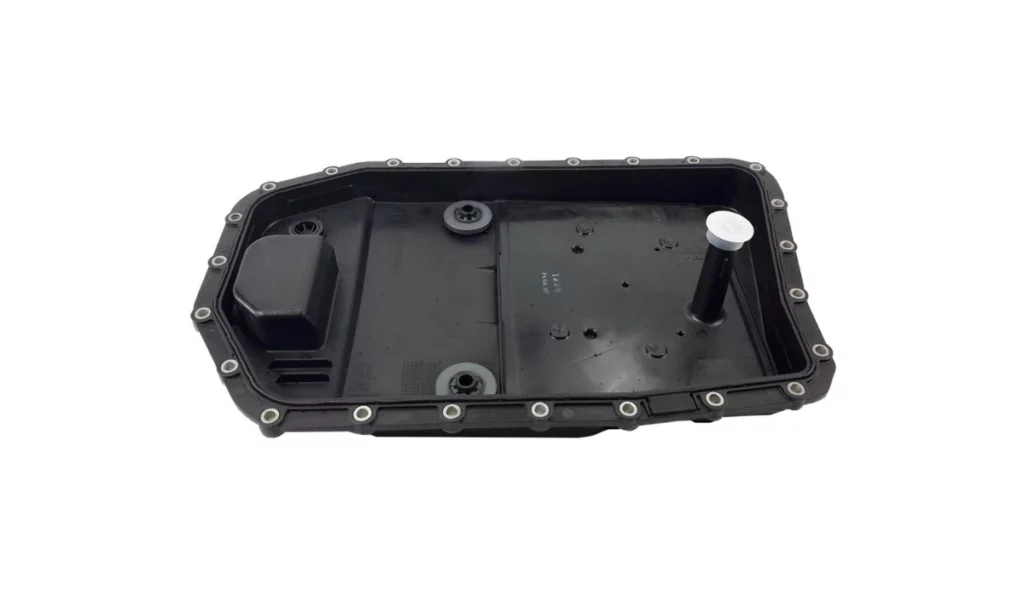
Test Driving to Confirm the Leak
After cleaning and applying the leak detector, take your vehicle for a short drive. This will help you confirm if the leak persists. After the test drive, inspect the mechatronics sleeve for leaks between the sleeve and the transmission body.
Possibility of Having a Crack on the Transmission Body
Inspect the transmission body for cracks, especially above the mechatronics sleeve location. Cracks can sometimes occur due to manufacturing defects or external damages, leading to ATF leaks. These cracks can cause confusion, making it seem like the leak is coming from the mechatronics sleeve when it is actually the transmission body that is leaking.
Examining Transmission Fluid Level and Condition
Finally, the transmission fluid level and condition must be checked. Low fluid levels can indicate a leak, while discolored and burnt-smelling fluid can signal deeper issues within the transmission. Regular inspection of ATF level and condition is crucial for maintaining transmission health.
Replacing the Mechatronics Sleeve
Replacing the mechatronics sleeves on 5HP and 6HP transmissions requires precision and safety but can be tackled as a DIY project with the right tools and instructions. For a comprehensive guide, including detailed pictures and expert tips, refer to our previous article on replacing the mechatronics sleeve.
The replacement process is a bit lengthy, but to summarize it, you will have to perform below steps:
Prepare the Vehicle — Ensure the vehicle is safely lifted and secured. Disconnect the battery to prevent electrical hazards.
Remove Oil Pan — Drain the transmission fluid and carefully remove the transmission oil pan. Prepare for fluid to drain out, and have a container ready to catch it.
Disconnect Electrical Connector — Locate and disconnect the electrical connector from the mechatronics unit. Ensure that the connector is safely removed and set aside to avoid damage.
Unlock and Remove the Mechatronics Sleeve — Safely unlock the locking tab of the mechatronics sleeve. Gently pull it out of the transmission, taking care not to damage surrounding components.
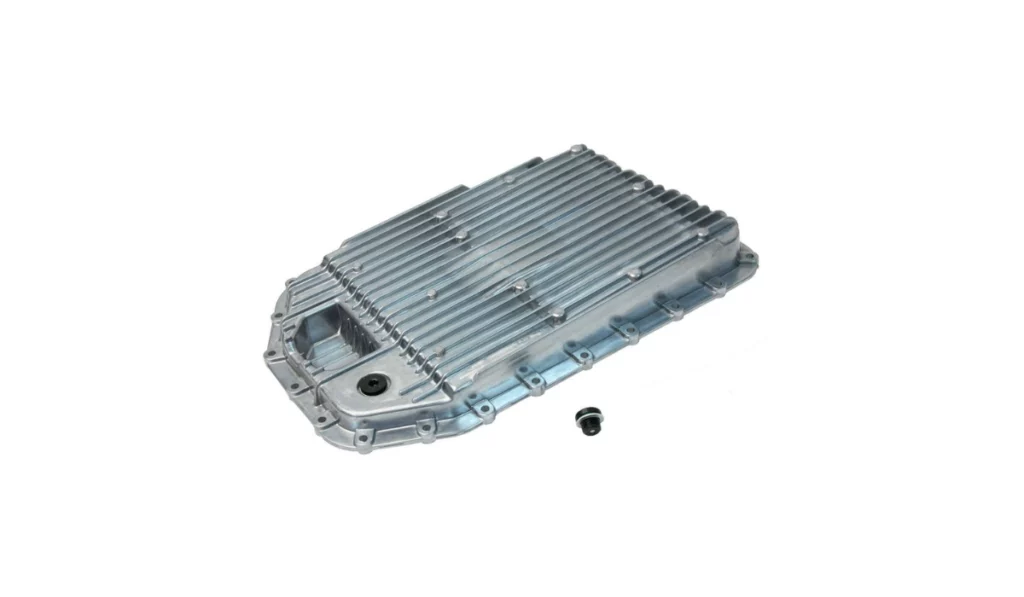
Install the New Mechatronics Sleeve — Lubricate the O-rings on the new sleeve with fresh transmission fluid. Insert the new sleeve into the transmission, ensuring it is properly aligned and secured.
Note — BMW advises against DIY repairs on the 8HP transmissions due to their complexity and the need for specialized equipment.
What Other Parts Might Need Replacement Along with the Sleeve?
When replacing the mechatronics sleeve, it’s advisable to inspect and potentially replace other related components to ensure the longevity and performance of your transmission. Common parts that might need replacement include:
Mechatronic Bridge and Tube Seal — Ensures a tight seal around the mechatronics unit. These seals prevent pressure loss from the mechatronics unit to clutches on the transmission assembly.
Oil Pan — Houses the transmission filter, which should be replaced to maintain clean fluid flow.
Automatic Transmission Fluid (ATF) — Essential for lubricating and cooling the transmission, always refill with fresh ATF after a repair.
Regular maintenance and timely replacement of these components can prevent future transmission issues and keep your BMW running smoothly.
Preventive Maintenance Tips
Maintaining your BMW’s transmission in optimal condition requires consistent and proactive care. Preventive maintenance can extend the lifespan of your transmission’s internal components, including the mechatronics sleeve, and prevent costly repairs down the line. Here are some essential tips to keep your transmission running smoothly.
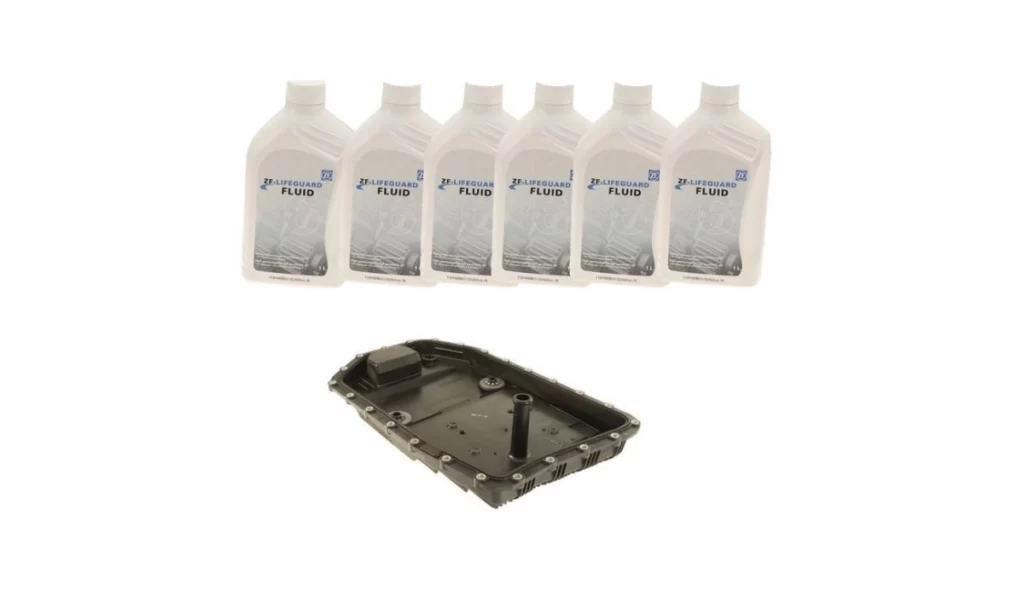
Transmission Fluid Flush
One of the most critical maintenance tasks is ATF and filter change at regular intervals. Initially, BMW stated that their transmission fluid was a “lifetime fluid,” implying it would never need changing. However, they later revised this recommendation, advising that the transmission fluid be changed every 100,000 miles.
Despite BMW’s guidelines, ZF, the manufacturer of the transmission, recommends changing the ATF and filter every 50,000 to 80,000 miles or every 8 years. The sooner you replace the ATF, the better it is for your transmission, as it ensures the fluid remains clean and effective in lubricating and cooling the transmission components.
Avoid Aggressive Driving Habits
Aggressive driving, such as rapid acceleration and abrupt braking, can stress your transmission unnecessarily. Adopt smoother driving habits to reduce wear and tear on transmission components, including the mechatronics sealing sleeve.
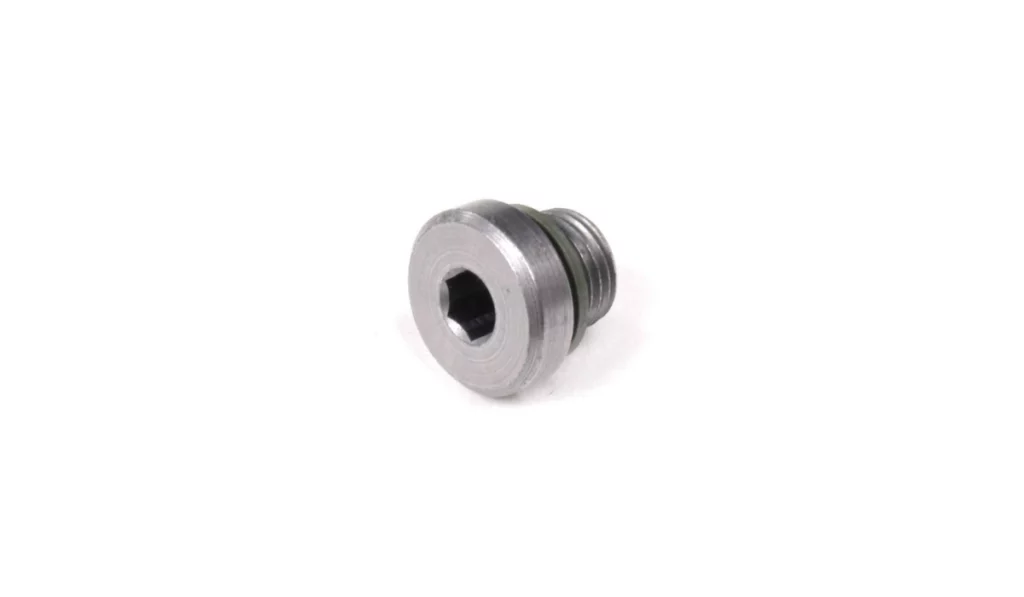
Check ATF Level and Quality
Regularly check the transmission fluid level and quality. Low fluid levels can indicate a leak, while dark and burnt-smelling fluid may suggest internal damage. Keeping an eye on these indicators can help you address issues before they become severe.
Choose Bimmers.com for Your BMW Parts Needs
When maintaining and repairing your BMW, high-quality parts are essential for optimal performance and longevity. Bimmers.com offers a wide selection of genuine BMW and OEM parts at competitive prices.
Our inventory includes everything you need for your vehicle, from essential engine components to specialized transmission parts like the mechatronics sleeve. By choosing Bimmers.com, you benefit from our commitment to quality, extensive product range, and exceptional customer service. We understand the importance of reliability and precision, which is why all our parts meet OEM standards.
Shopping with us means you get the best parts for your BMW, backed by our knowledgeable support team, ready to assist with any questions or concerns. Don’t settle for less — trust Bimmers.com for all your BMW parts needs and keep your vehicle running smoothly. Visit our website today to explore our offerings and experience the difference in quality and service.

